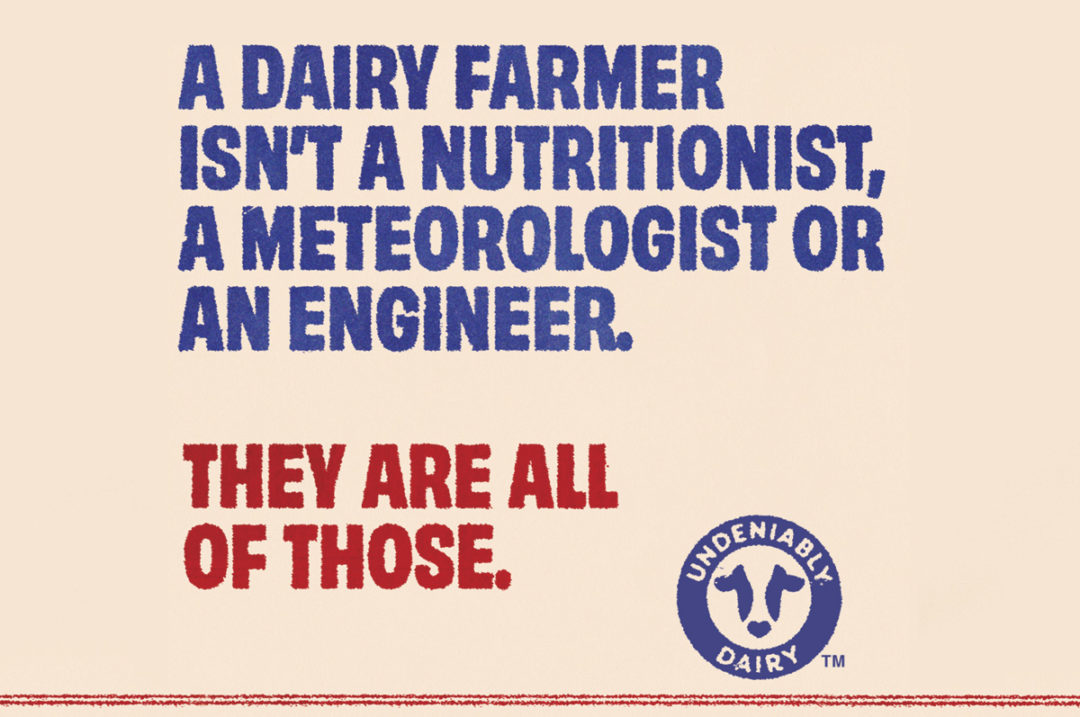A farmer is more than a farmer.
I know it. You know it. Anyone associated with the U.S. dairy industry knows it.
But not every consumer knows it. For some, particularly adolescents, young adults and early parents, being a dairy farmer is only about milking cows every day.
They are not up to speed on just how responsibly produced dairy is, a topic of interest to not only consumers but to thought leaders. They want to understand more about farmers’ continuous efforts in areas including greenhouse gas (GHG) emissions, water use and animal care.
The “farmer is more than a farmer” theme is the thread that runs through our new dairy checkoff responsible production content. It was shared by Dairy Management Inc. (DMI) in conjunction with our 16 state and regional checkoff teams earlier this fall.
It is a nationwide effort to introduce young consumers and parents to all that dairy farmers do beyond making nutritious milk available. We know there are consumers who like dairy, but they may question the farm practices behind the glass of milk or piece of cheese they are eating.
They want reassurance from our industry that we are as invested in the environment as they are. This content will show just that. It features stories and proof points that combat misinformation and shine a light on the many behind-the-scenes efforts farmers have made for generations to responsibly nourish people across the world, particularly when it comes to caring for their cows, renewable energy and conserving water.
Along the way, we hope to offer an element of surprise and show people a side of dairy they never knew existed.
Filling the pipeline
We conducted focus group discussions with younger consumers, and we studied research and trends. Our findings revealed most young people think dairy farmers are good people who are doing the right thing for their land and animals. But we also found about 56% have never seen a dairy cow up close, and the majority have never stepped foot on a farm, so there is great educational opportunity for us.
This fall has provided many opportunities to tie our story into existing moments, including Climate Week (Sept. 17-24) and National Farmer's Day (Oct. 12), and will continue to provide opportunities at the United Nations Climate Change Conference (Nov. 30 through Dec. 12). Our intent is to keep the information pipeline churning.
Checkoff teams across the U.S. have begun sharing content in outlets that are most relevant to consumers. It’s a “fish where the fish are” approach, so you will see dairy stories appear across TikTok, Hulu, Spotify, Instagram, Facebook and other channels.
We are working with influencers, including our Dairy Dream Team, which has a strong and respected online presence to share the dairy farmer story from their authentic perspectives. These influencers participated in a checkoff-led virtual dairy farm tour so they could hear from our farmers on what it takes to responsibly produce milk.
Other checkoff-created social media content includes video spots focusing on how farmers recycle water and feed their cows a nutritious diet, as well as how dairies generate renewable energy.
We will also engage media partners such as VOX, which will produce videos, podcasts, articles and social media content about dairy’s sustainability journey, featuring farmers and other subject matter experts. TIME Magazine will publish a video and article that emphasize how water is a precious resource in dairy production and how cows are the ultimate recyclers.
This effort is more important than ever as we know young consumers and parents are tuned into issues such as the environment, which has increasingly affected their purchase decisions. They want to be reassured the food they are selecting not only delivers nutritionally but that it was made in a way they can feel good about.
This is our time to illustrate and reinforce how responsible production is a part of every drop of milk our farmers make possible.
To learn more about your national dairy checkoff, visit the website or send an email to reach us directly.
This article was written by Lamont Frazier, who is the vice president of marketing communications at DMI.




